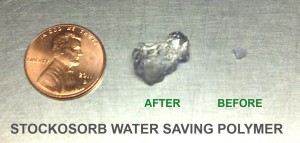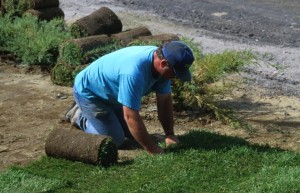Troubleshooting Sod Issues
Below you will find some of the more common issues with turf grass care. Please feel free to contact us, if you have further questions.
If DRY SPOTS appear in the lawn during the afternoon, the irrigation time should be increased. If dry spots persist, an irrigation uniformity problem is likely, and an additional sprinkler head may be required.
BROWN LAWN areas are most commonly caused by one of three types of problems: Improper watering, burn, or disease. Check for watering and burn problems first before treating for disease.
BROWN SPOTS caused by a burn will result from pet urine, over-fertilization, gasoline spills, etc. Burn spots are distinguished from other types of damage by their “total kill” straw-yellow color. If a burned area is thoroughly flushed with water in the early stage of damage some recovery may occur. Otherwise reseeding or sodding may be necessary. However, with bluegrass, if you are patient, the area will fill itself in. It will just take some time. With fescue, overseeding or re-sodding will be necessary, as it will NOT fill itself in.
To check for LACK OF WATER use a screwdriver or knife to probe the brown areas of your lawn as well as the healthy green areas. If the brown area is more difficult to penetrate then a lack of water is likely. This is usually the result of poor sprinkler spacing or sprinkler malfunction. Saturate the area with a hose as soon as possible and continue to provide supplemental water until the sprinklers are repaired.
EXCESS WATER can cause turf to die by suffocating the plants roots or rotting its crown. This generally occurs in low spots or shady areas. Check for muddy soil, algae crusts, or slimy rotting grass. To correct problems in the shade, reduce irrigation time to that area or replace the sprinklers with lower volume heads. Low spots must either be raised or set up to drain. A French drain might need to be installed, which can be done by local landscape contractor.
DISEASES are almost always related to heat and moisture. However, poor irrigation practices can also promote disease development. The longer moisture stays in the turf foliage the greater the disease risk. Therefore, do not water at night, (between 6 pm and 4 am) since the lawn will stay wet until morning. It is best to irrigate between 6 am and 8 am. Early morning watering reduces evaporation.
YELLOWING can be either due to too much watering or lack of nitrogen/fertilizer. A soil probe test can tell you what you whether there is too much water or not. If the soil is wet, then you might test your watering methods and time, taking into consideration precipitation or drainage solutions (see “EXCESS WATER” above). If your soil is drier, then you might consider fertilizer, as long as it’s less than 75 degrees Farenheit (air temp).


